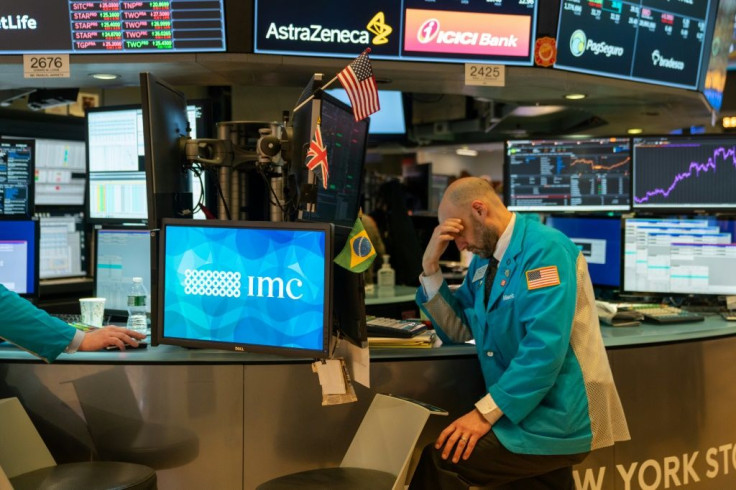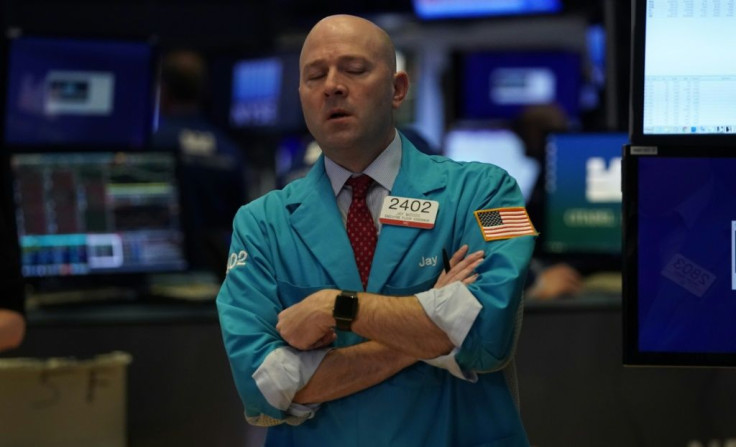Stock Market Futures: Dow, S&P 500, NASDAQ Drop After Tuesday's Slight Rebound

KEY POINTS
- The bloodbath that characterized most of last week continues Wednesday with futures indicating another selloff
- The Trump administration's $1 trillion bailout is seen by investors as an admission the COVID-19 crisis is spinning out of control
- Wall Street's fear index is now higher than its level during the Great Recession of 2008
A rout. A rally. Another rout. The predictable pattern of Wall Street's panic-stricken behavior over the past three weeks now sees a plunge in Wednesday futures for both the Dow Jones Industrials and the S&P 500.
The unerring result, as borne out by similar previous episodes, will be another precipitous drop in all three indices when trading opens Wednesday.
This time, Dow futures fell in early morning trading Wednesday despite the Trump administration's announcement Tuesday of a massive $1 trillion fiscal stimulus and "helicopter money" of about $1,000 for most American families to tide them over the rough patch created by the COVID-19 pandemic.
At around 1:00 a.m. ET, futures on the Dow nosedived 821 points, indicating a more than 1,000-point loss at Wednesday’s open. S&P 500 and NASDAQ-100 futures were also down.
The drop saw Dow Jones futures lose more than 4% vs. fair value at their lows before reducing losses to 2.5%. On the other hand, S&P 500 futures trimmed losses to about 2.8%. NASDAQ futures slipped about 2.7% vs. fair value.
Futures contracts fell so fast they hit “limit down” territory for the third time in two weeks. Limit down is a situation where trading is halted after either index hits a 5% loss and can't be allowed to fall any lower.
The renewed rout in futures starkly illustrates the prevailing fear gripping investors and the unsettling volatility that's hurtling the U.S. economy into a recession by the the end of the second quarter of this year.
The fear is visible in the historic highs on the Cboe Volatility Index (also known as the VIX). VIX, which is Wall Street’s fear gauge, on Tuesday closed at highest level ever, surpassing even the peak fear level during the Great Recession of 2008.
VIX jumped nearly 25 points to close at a record high of 82.69, easily exceeding the peak fear level of 80.74 on Nov. 21 2008. It tracks the 30-day implied volatility of the S&P 500 and looks at prices of options on the S&P 500 to track the level of fear on Wall Street.
“It’s now apparent that we’re in the depths of the COVID-19 financial crisis of 2020, with much left to be written,” said Jon Hill, rates strategist at BMO (Bank of Montreal), a major Canadian multinational investment bank and financial services company.
The fear is being stoked by uncertainty around the length of the COVID-19 pandemic and its economic impact. Bill Miller, founder of Miller Value Partners, said the fear reflects the uncertainty and potential impact of that range of outcomes. Miller Value Partners is dedicated to maximizing the long-term wealth of its investors.
“When the market thinks the authorities don’t get it ... the market reflects that immediately. When it believes proactive measures are being taken -- Trump’s remarks [Friday] -- that is quickly evident in the market’s reaction," said Miller.

© Copyright IBTimes 2024. All rights reserved.





















